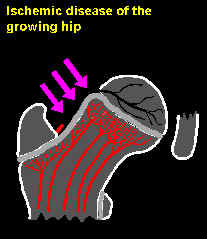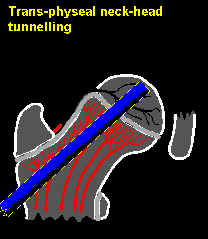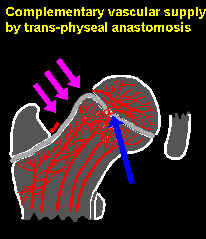Nuno
Craveiro Lopes
Head
of Orthopedic and Traumatologic Department
Garcia de Orta Hospital, Almada - Portugal
Any
comment, suggestion or contact can be done to: [email protected]
CLINICAL CASES PRESENTATION
The
effect of transphyseal neck-head tunneling (TNHT) in cases of ischemic disease
of the growing hip (IDGH) and Legg-Calvé-Perthes disease (LCPD).
Our
experience with TNHT since 30 years ago to present, includes 205 procedures, 88
in IDGH cases with risk of progression to LCPD and 117 cases of
LCPD in necrotic stage.
We
present some typical cases of the effect of TNHT in IDGH and LCPD.
Indications for the TNHT procedure.
|
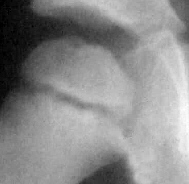
Stage II of IDGH (Ischemic episode
in evolution, with signs of another old ischemic episode)
|
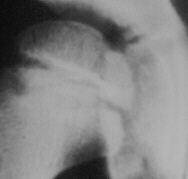
Stage III of IDGH (Ischemic
episode in evolution, over a earlier ischemic episode). |
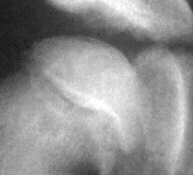
Stage I of LCPD (Dense
epiphysis, subchondral fracture yet without significant collapse). |
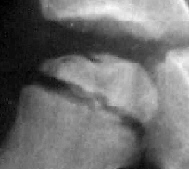
Stage II of LCPD (Collapse yet
without significant fragmentation). |
TNHT procedure
|

Guide
wire centered to the lesion, introduced with a motor drill.
|
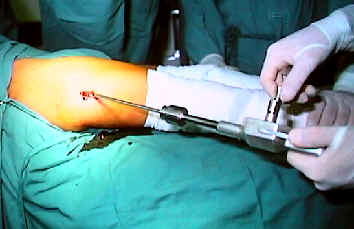
Tunneling
with a 5mm trephine or cannulated drill with a hand drill. |
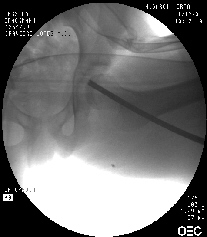
The trephine or drill must go
trough the growth plate till the subchondral zone. |
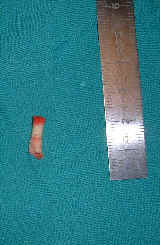
Biopsy fragment for
histological investigation |
TNHT induces a marked increase of
epiphyseal micro-vascularisation, due to the passage and anastomosis of small
blood vessels between metaphysis and epiphysis, thus preventing new ischemic
episodes on a IDGH patient, aborting the evolution to LCPD.
5
yo patient, presenting a stage III IDGH which was not treated by TNHT. 6
months later the patient developed LCPD.
|
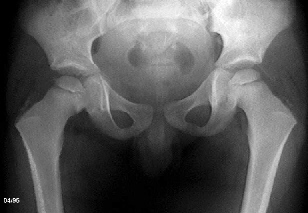
04/1995 - Pain and limp at the right
hip (left on the image). Widening of the medial space and porotic epphysis,
representing a IDGH stage III.
|
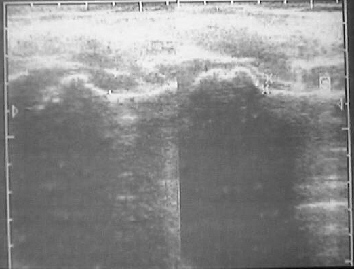
04/1995 - US scan showing effusion
and synovitis on the right hip (left on the image).
|
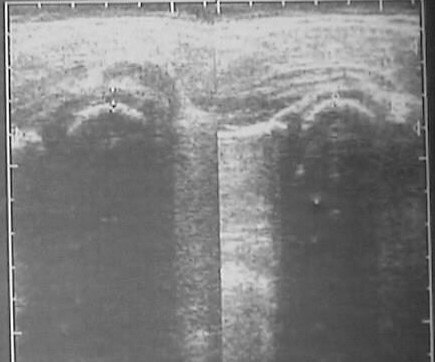
04/1995
- US scan showing thickening of the articular cartilage on the right hip (left
on the image). |
|
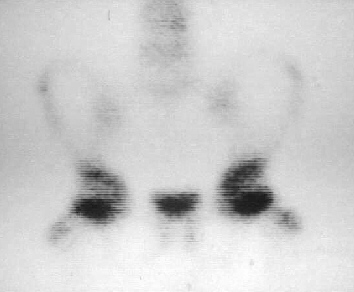
04/1995 - Nuclide
bone scan showing a cold spot at the right hip (left on the image)
|
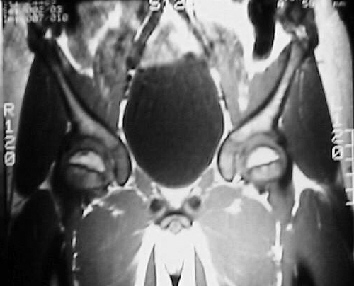
04/1995 - MRI showing
the typical image of IDGH. Low signal spot near subchondral zone of the right
epiphysis, on T1 weighted images (left on the image)
|
|
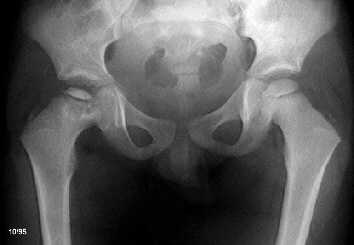
10/1995 - Patient was lost from
control and returned 6 month later, clinically worst. Then he presented a stage
III LCPD (Necrosis with collapse and metaphyseal cysts).
|
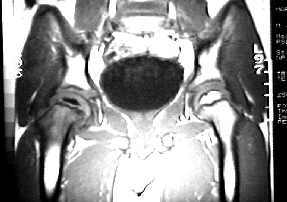
10/1995 - MRI showing the typical
image of LCPD. Extensive zone of low signal at the right epiphysis, on T1
weighted images. (left on the image)
|
|
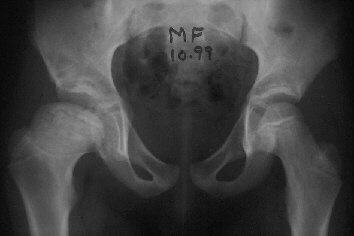
10/1999 - Result at 4 years of
follow up after Saito acetabuloplasty. Graded as a Stulberg IV end result.
|
|
Typical
long follow up evolution of a 5 yo patient with a IDGH stage II case, treated
with a early TNHT procedure.
|
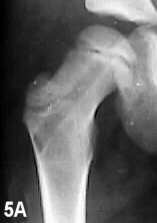
Patient with a IDGH stage II, which
have undergone an early TNHT procedure.
|
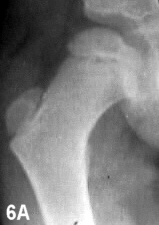
Follow up 1 year after TNHT
procedure. |
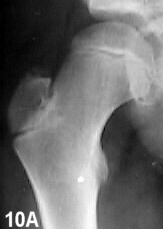
Follow up 5 year after TNHT
procedure. |
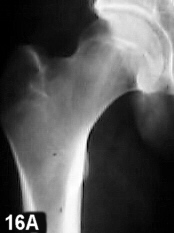
Follow up 11 year after TNHT
procedure. |
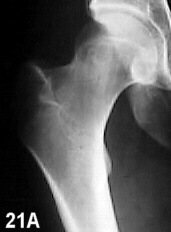
Follow up 16 year after TNHT
procedure. No sign of growth impairment of the proximal growth plate.. |
6
yo patient presenting a stage III IDGH, where an early TNHT procedure stoped the
evolution to LCPD.
|
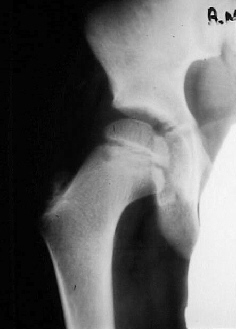
10/1989 - Stage III IDGH.
(High risk of evolution to LCPD)
Epiphyseal porosis, signs of
subchondral fragility
|
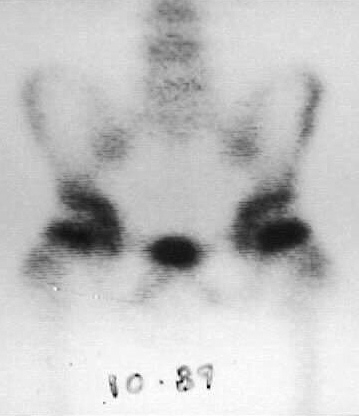
10/1989 - Nuclide bone scan
showing a cold spot on both hips, more extensive at the right hip (left on
the image). A stage II IDGH was diagnosed at the left hip (right on the
image) |
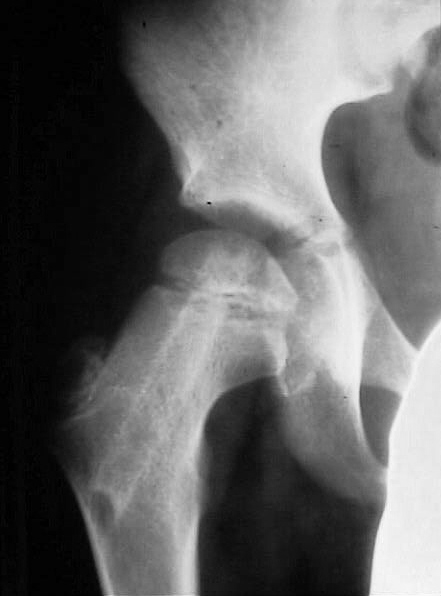
11/1989 - One month after the
bilateral TNHT procedure, showing a fast epiphyseal reconstruction without
collapse. |
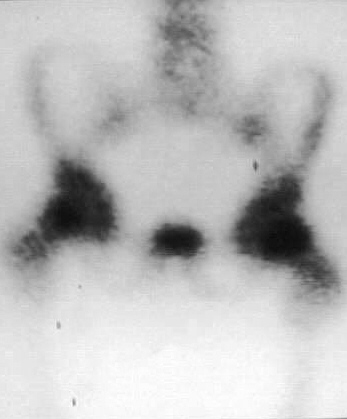
01/1992 - Nuclide bone scan done 2 years after the bilateral TNHT procedure,
showing high uptake of Tecnetium on both hips.
|

9/1993 - Follow up 4 years
after TNHT. Spherical head, without growth disturbances. Frontal view. |
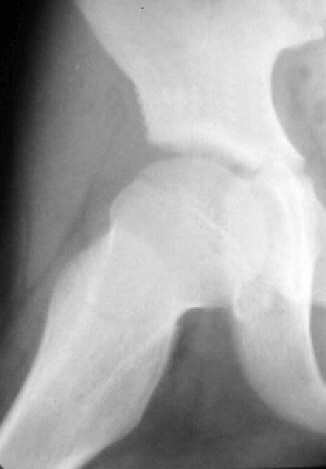
9/1993 - Follow up 4
years after TNHT. Spherical head, without growth disturbances. Lateral
view. |
8 yo patient presenting a stage
III IDGH, where an early TNHT procedure stopped the evolution to LCPD.
|
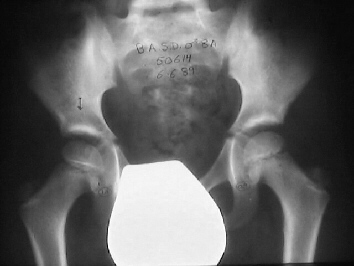
06/1989 - Stage III IDGH at the
right hip
(High risk of evolution to LCPD) and
stage II IDGH at the left hip (medium risk of evolution to LCPD).
|
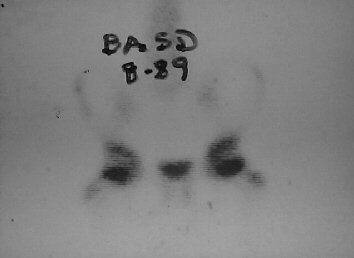
08/1989 - Nuclide bone scan
showing a cold spot on both hips, more extensive at the right hip (left on
the image). |
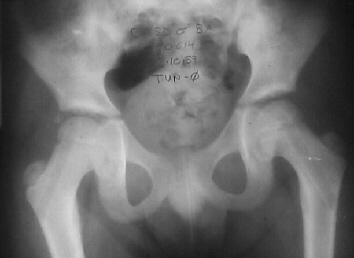
10/0989 - TNHT procedure done
bilaterally. |
|
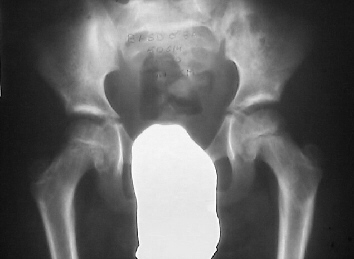
04/1990 - Follow up 6 months after
TNHT
|
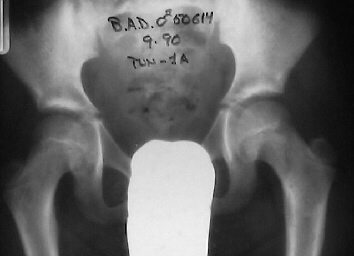
09/1990 - Follow up 1 year
after TNHT procedure. Frontal view |
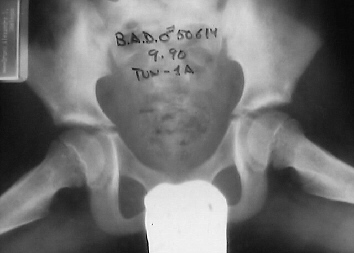
09/1990 - Follow up 1 year
after TNHT procedure. Lateral view |
|
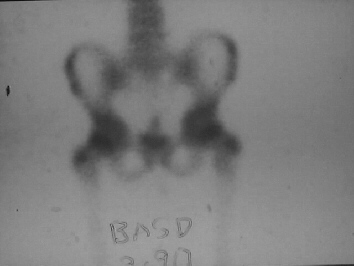
09/1990 - Nuclide bone scan done 1
year after the bilateral TNHT procedure, showing high uptake of Tecnetium on
both hips.
|
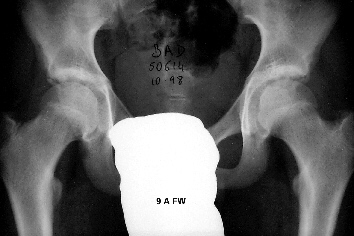
10/1998 - Follow up 9 years
after TNHT procedure, showing a bilateral spherical head, without growth
disturbances. |
|
On LCPD cases where TNHD was done
early on the evolution, we found that
fragmentation stage was reached in half the usual time ( mean 5 months )
and only 18% needed to be subjected to a surgical containment.
|

Above:
Evolution without TNHT
Bellow.
Evolution with TNHT |
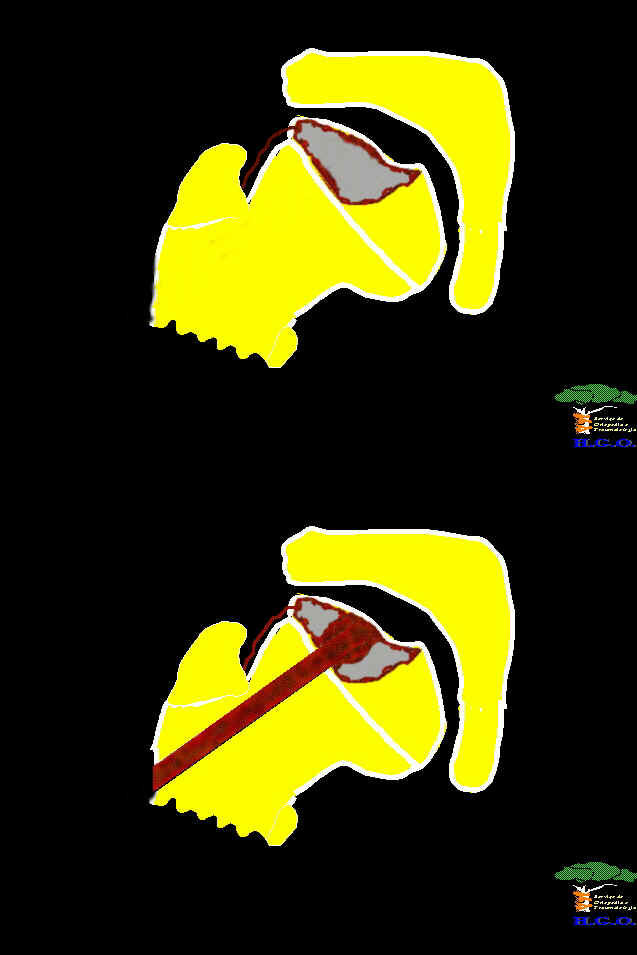 |
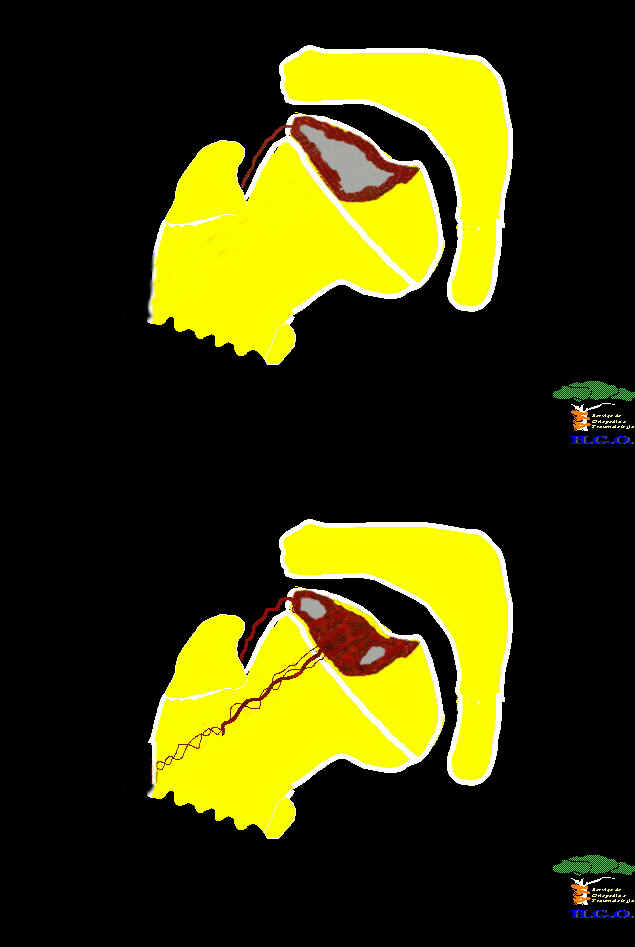 |
 |
Favorable outcome after TNHT
procedure on a 6 yo child presenting a stage I LCPD case.
|
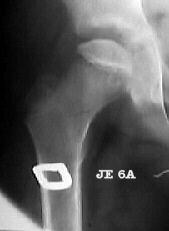
Stage I LCPD
|
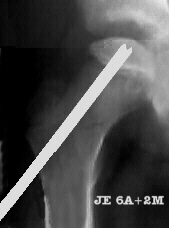
TNHT procedure |
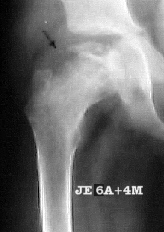
Follow up 2 month after TNHT
procedure. Far in front of fragmentation stage. We found that the
procedure shortens the evolution of the disease to 1/2 to 1/3.
|
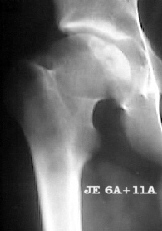
Follow up 11 years after the
TNHT procedure. Although "head at risk" signs has appeared,
patient got a Stulberg III end result without further treatment.
|
Favorable outcome after TNHT
procedure on a 6 yo child presenting a stage I LCPD case.
|
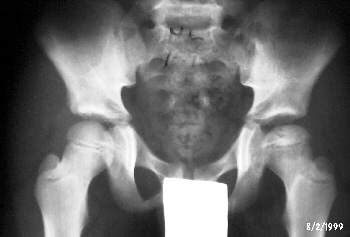
Stage I LCPD at the left hip (right
on the image).
|
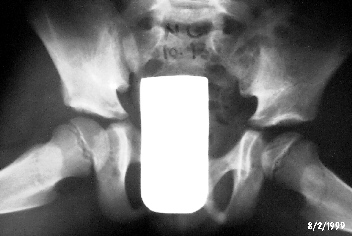
|
|
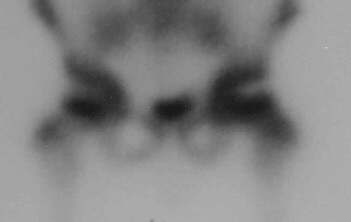
Nuclide bone scan showing a cold
spot at the left hip (right on the image).
|
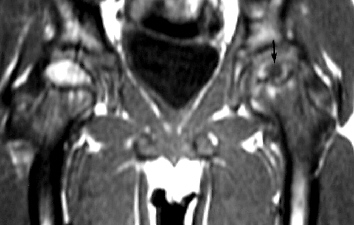
MRI showing the typical image
of LCPD. Extensive zone of low signal at the left epyphisis, on T1
weighted images. (right on the image) |
|
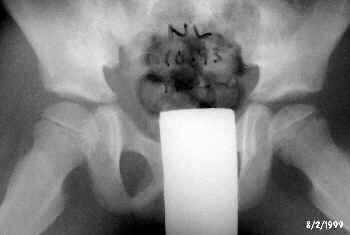
TNHT procedure on the left hip (right on the image)
|
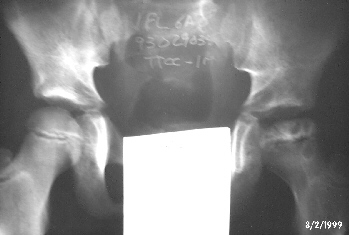
Follow
up one month after TNHT procedure. Stage IV LCPD (fragmentation). We found
that the procedure shortens the evolution of the disease to 1/2 to 1/3. |
|
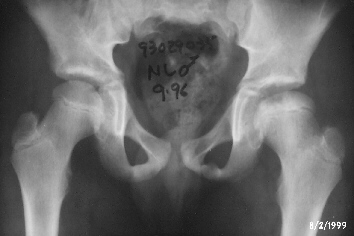
Follow up 3 years after TNHT.
Patient got a Stulberg II end result without further treatment.
|
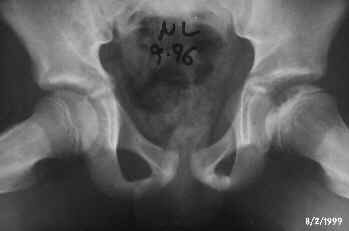
|








